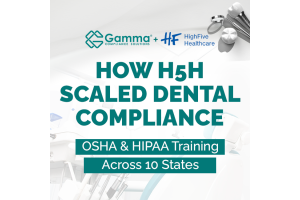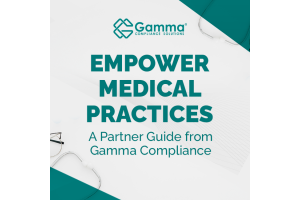Page 4 - Resource Library
- March 15, 2024OSHA Guides
The Occupational Safety and Health Administration (OSHA) stipulates various regulations to manage medical waste disposal effectively, ensuring healthcare workers’ and the general public’s safety. These regulations include examples like the Bloodborne Pathogens Standard. It emphasizes the need for all healthcare facilities to have an exposure control plan outlining how to handle, store, and dispose of potentially infectious materials. OSHA also requires practices to appropriately label biohazardous waste, ensuring that all containers or bags for disposal are red or orange and carry the universal biohazard symbol. Furthermore, OSHA mandates rigorous training for all employees handling medical waste, ensuring they’re familiar with risks and proper procedures. These regulations underscore the importance of safe practices in the management of medical waste.
- March 15, 2024OSHA Guides
An Occupational Safety and Health Administration (OSHA) exposure control plan is a critical protocol designed to minimize or eliminate employees' exposure to hazardous substances in the workplace. It outlines measures to identify potential exposure risks, implement safety practices, provide training, and ensure regular updates to maintain efficacy.
- August 09, 2023Infection Control
Infectious diseases are some of the greatest threats to workplaces in the health-care industry. The spread of infections affects patients, professionals, and third-party visitors. Proper infection control in medical offices enhances everyone’s health and safety, preventing life-threatening risks. The Center for Disease Control and Prevention (CDC) establishes and enforces many infection control practices that coincide with OSHA’s workplace health and safety standards. We’ve collected and simplified the best infection control guidelines for medical offices to give you a one-stop-shop resource for infection protection.
- August 09, 2023OSHA Guides Infection Control
Protective personal equipment (PPE) plays an important role in health care, preventing the spread of diseases and contact with toxic or sharp materials. PPE comes in many forms, providing multiple ways to protect health-care professionals and patients. Surgical masks and respirators are some of the most effective health-care PPE. Although both masks shield your mouth and nose, surgical masks and respirators differ in their purpose and use. Knowing the distinction between surgical masks versus respirators enhances the health and safety of your medical workplace and affects everyone who interacts with that space, from doctors to visitors. Check out our simple guide on surgical masks versus respirators and keep your office safe.
- July 14, 2023OSHA Guides
The Occupational Health and Safety Act (OSHA) establishes and enforces workplace health and safety standards. OSHA regulations cover an array of workplace health and safety protocols designed to combat the many possible dangers in one’s work environment. However, it is up to employers and employees to implement these best practices, follow regulation standards, and put in the effort to make their workplaces healthy and safe.
To ensure proper implementation of health and safety protocols, the Department of Labor sends out a team of OSHA representatives to conduct a workplace inspection. Learn how OSHA inspections are conducted and prepare to pass your inspection with flying colors.
- July 14, 2023OSHA Guides
Working in healthcare comes with many rewards, but the nature of the job also involves lots of health and safety risks. Healthcare workers encounter an assortment of workplace dangers, from bloodborne diseases to hazardous waste. Exposure to airborne hazards like infectious pathogens and toxic chemicals is among healthcare’s most common and serious dangers.
Health and safety protocols and best practices make a huge difference in a high-risk work environment, enhancing work conditions to better benefit workers and customers. Respiratory protection for healthcare workers is one of the many ways medical facilities can keep their employees and patients safe from airborne hazards.
- June 15, 2023OSHA Guides
Effective communication keeps workplaces operating smoothly, making sure everyone is on the same page, receives clear commands, and comprehends important information. OSHA’s standard for hazard communication establishes best practices for communicating hazards to enhance the health and safety of a workplace.
- June 15, 2023OSHA Guides Infection Control
OSHA’s bloodborne pathogen standard protects workers from potentially deadly and serious viruses like the human immunodeficiency virus (HIV) and hepatitis B (HBV). Bloodborne pathogens can travel through bodily fluids, such as blood, saliva, and semen.
Healthcare workers are especially at risk of bloodborne pathogens due to the nature of their job. Common transmissions of bloodborne pathogens include direct dermatitis contact, respiratory transmissions, and penetration from infected objects, like needles. Following OSHA’s bloodborne pathogen universal precautions implements best practices and safety measures that protect yourself and others from the risks of bloodborne viruses in your workplace.
- April 11, 2023OSHA Guides
The Washington Industrial Safety and Health Act (WISHA) is Washington’s independent state health and safety plan for workplaces. It enforces many similar regulations to OSHA’s generic health and safety plan with a couple of additional components and more stringent requirements that apply to local state policies and circumstances. If you own a veterinary, dental, or medical business in Washington, familiarizing yourself with WISHA will help you solidify your compliance and optimize your office in many ways, from performance to safety.
- March 22, 2023HIPAA Guides
The Health Insurance Portability Accountability Act (HIPAA) creates national standards dedicated to protecting sensitive patient health information and the rights of individuals and covered entities involved.





